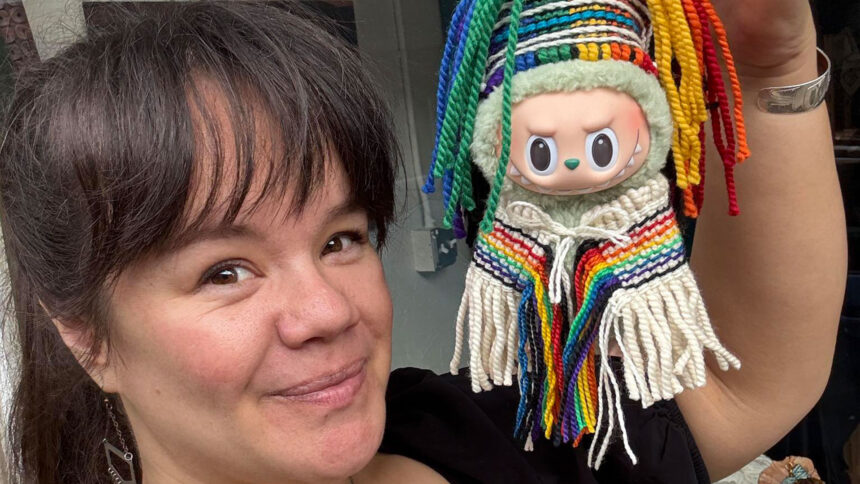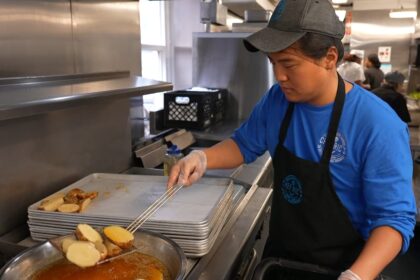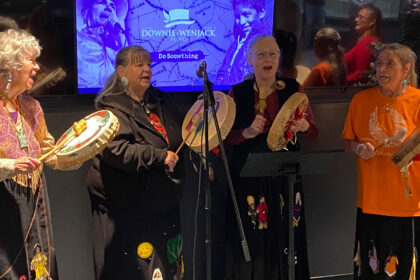It might just be the tiniest Tlingit regalia ever made. Fashioned out of repurposed dance cuffs, the regalia is just the right size to fit a Labubu. “I got some pretty serious chuckles from close friends and family that were like, ‘What are you doing? Are you serious? Really?’ My children, of course, were like, ‘I need one,’” said Tlingit artist and Chilkat weaver Lily Hope in an interview with APTN News. The collectable monster plushies sold by Chinese toy company Pop Mart have become increasingly popular in recent months with both kids and adults. Their trendiness has been fueled by social media platform TikTok, where creators post everything from Labubu unboxings to cars covered in hundreds of plushies. Hope, who is based in Juneau, Alaska, said she was inspired to create regalia thanks to her three school age daughters obsession with the toy, as well as a Labubu she saw on social media sporting a quill and beaded ensemble. “I thought, well, that looks like ceremonial art to me, like that is reclaiming some trend that’s popular, right?” she said. “Here’s an opportunity to share Raven’s Tail and Chilkat weaving across the world in a very different way.” Hope took her regalia creations to the Santa Fe Indian Indian Market in New Mexico earlier this month, where she said they quickly blew up. She said she’s since received many requests for Labubu regalia, including from Los Angeles film producer and art collector Michael Sherman. “I kind of peed my pants,” she joked, noting the recognition helps promote Raven’s Tail and Chilkat weaving beyond the northwest. “This is a very affordable way to hold some of our culture and celebrate it in a really fun way,” she said. Hope’s Labubu regalia also made an impression on Katie Bunn-Marcuse, curator of Northwest Native Art at the Burke Museum in Seattle, Wash. Bunn-Marcuse purchased a regalia outfit and an accompanying Labubu from Hope, as well as a Labubu in a red Tlingit collar and pie hat made by Hope’s aunt Deanna, to add to the museum’s collection. The Labubus will be featured in an exhibit next month celebrating contemporary Coast Salish weaving. “We don’t just collect things that are from the past, but of course, we want to collect things that are from weavers and artists today,” Bunn-Marcuse said. “We want to know that in a generation from now, and two generations from now, what are the things that were being made right now in 2025.” Building on the Labubu excitement, Hope’s now selling regalia kits and will be holding classes in person and online for those interested in learning how to make Labubu regalia of their own. Beyond that, she said her life’s mission is to make Raven’s Tail and Chilkat weavings as instantly recognizable as Moroccan or Dene Navajo textiles – a dream the Labubu craze is helping her achieve. “(I hope that) when someone sees it, they’re like, ‘I know where that comes from. I know that there are people alive right now making them, and I know it’s called Raven style weaving.’” Continue Reading
Tlingit artist crafts regalia for trendy Labubu while sharing traditional Chilkat weaving

Leave a Comment










